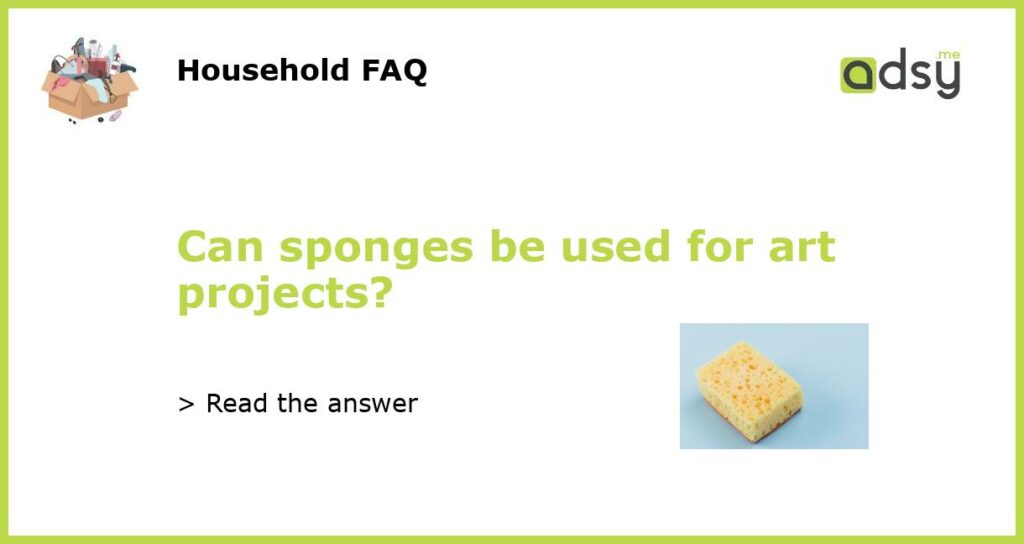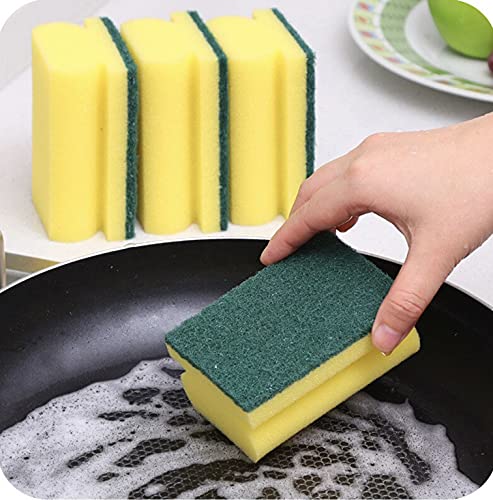Yes, sponges can be used for art projects
When it comes to art supplies, sponges may not be the first thing that comes to mind. However, they can actually be quite versatile and useful in a variety of art projects. Their unique texture and ability to absorb and release liquid make them a great tool for exploring different techniques and creating interesting effects. Whether you’re working with paint, ink, or even clay, sponges can be a valuable addition to your artistic toolkit.
Creating texture and patterns
One of the primary uses for sponges in art projects is to create texture and patterns. The porous nature of the sponge allows it to hold and transfer paint or ink in a way that brushes or other tools cannot. For example, you can dip a sponge in paint and then stamp it onto a surface, creating a stippled or mottled effect. This technique can be used to add depth and interest to paintings, prints, or even mixed media collages.
Sponges can also be used to create patterns by cutting them into different shapes or sizes. This can be particularly effective when working with fabric or textiles. By dipping the sponge in fabric paint and then pressing it onto the surface, you can create unique and custom patterns that would be difficult to achieve with a brush.
Blending and smoothing
Another way sponges can be used in art projects is for blending and smoothing. By using a damp sponge, you can gently blend and soften the edges of colors, creating a seamless transition from one hue to another. This technique is often used in watercolor painting to create smooth washes of color. Sponges can also be used to blend and soften the edges of charcoal or graphite drawings, creating a more realistic and lifelike effect.
Similarly, sponges can be used to smooth out clay or other sculpting materials. By dampening the sponge and gently rubbing it over the surface, you can remove any imperfections or fingerprints, resulting in a smoother and more polished finish.
Creating special effects
Sponges can also be used to create special effects in art projects. For example, you can use a sponge to create a sponge painting technique, where multiple colors are applied to the sponge and then dabbed onto the surface, resulting in a textured and layered look. This technique can be particularly effective when used with acrylic or oil paints, as the thick consistency of these mediums allows for more dramatic effects.
Additionally, sponges can be used to create a stippling effect, where small dots of paint or ink are applied to the surface using a sponge. This technique can be used to create detailed and textured surfaces, such as in pointillism or stipple drawings.
Exploring mixed media
Sponges are also a great tool for exploring mixed media art projects. Because they can be used with a variety of materials, including paint, ink, and clay, they can be easily incorporated into collages, sculptures, and other three-dimensional works. By using a sponge to apply different textures, colors, or materials, you can create interesting and dynamic compositions that are visually engaging and unique.
Incorporating sponges into your art projects can open up a world of possibilities. Their versatility and ability to create texture, blend colors, and create special effects make them a valuable addition to any artist’s toolkit. So the next time you’re working on a painting, print, or mixed media project, consider reaching for a sponge and see how it can enhance your work.






